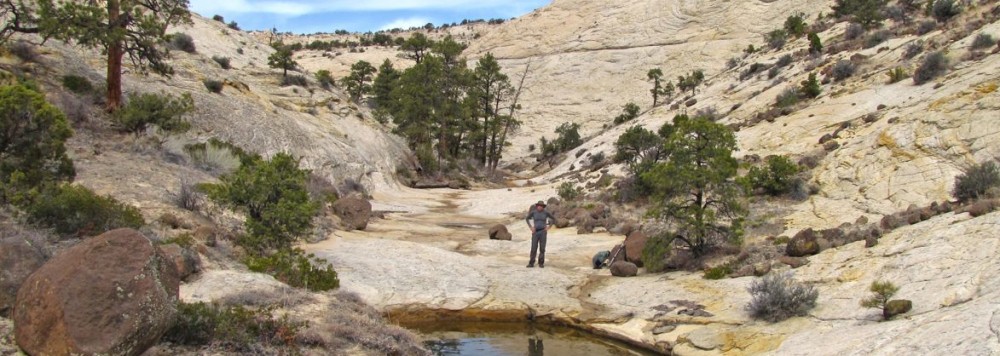 Lucky enough to snag a trip down into the Grand Canyon with the Granite Camp Planters on their finale to the 2012 Tamarisk eradication program along the Colorado River corridor in the depths of the Grand Canyon.
Lucky enough to snag a trip down into the Grand Canyon with the Granite Camp Planters on their finale to the 2012 Tamarisk eradication program along the Colorado River corridor in the depths of the Grand Canyon.
According to the National Park Service website Tamarisk, commonly known as salt cedar, is an exotic (non-native) shrub or tree that grows in dense stands along rivers and streams in the west. Tamarisk, introduced to the U.S. in the 19th century as an erosion control agent, spread through the west and caused major changes to natural environments. Tamarisk reached the Grand Canyon area during the late 1920s and early 1930s, becoming a dominant riparian zone species along the Colorado River in 1963 (following completion of Glen Canyon Dam).
 I’ll be trying out my newest ultralight acquisition a zPacks ArcBlast (15.5 oz 52 liter) made of cuban fiber sail cloth. Unfortunately I’ll have to load it up for the descent on the Hermit Trail down to Monument Creek with up to 34 pounds of load. My base weight will be 12.3 pounds but we’re required to carry 4 liters of water (8 pounds) and approximately 15 pounds of group food (which isn’t the dehydrated versions I normally carry). Fortunately I’ll only have the 12# plus 8# of water coming back up the trail and the water weight will decrease by the hour.
I’ll be trying out my newest ultralight acquisition a zPacks ArcBlast (15.5 oz 52 liter) made of cuban fiber sail cloth. Unfortunately I’ll have to load it up for the descent on the Hermit Trail down to Monument Creek with up to 34 pounds of load. My base weight will be 12.3 pounds but we’re required to carry 4 liters of water (8 pounds) and approximately 15 pounds of group food (which isn’t the dehydrated versions I normally carry). Fortunately I’ll only have the 12# plus 8# of water coming back up the trail and the water weight will decrease by the hour.






